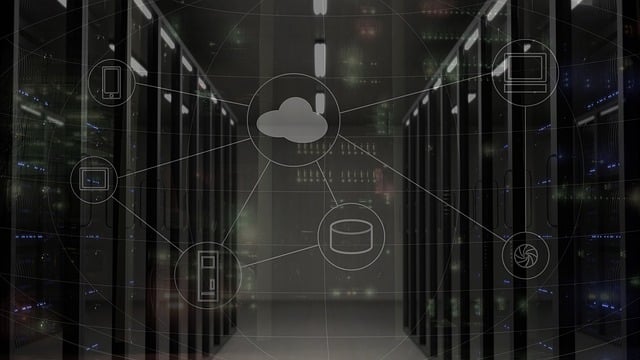Deepfakes involve AI-generated synthetic media that convincingly mimics real individuals' voices and faces. While initially popularized in entertainment and satire, cybercriminals now weaponize this technology for fraud, identity theft, and corporate deception.
According to a 2023 study by Sumsub, deepfake fraud attempts increased by 704% between 2022 and 2023. Additionally, the FBI has warned businesses about rising cases of AI-generated fraud, estimating that financial damages could exceed $10 billion annually.
Evolution of social engineering
Social engineering exploits human psychology to manipulate individuals into revealing sensitive information or taking harmful actions. Traditional phishing attacks rely on deceptive emails, but deepfakes have taken impersonation to a new level by creating convincing audio and video forgeries. Attackers now impersonate executives, government officials, and even family members to gain trust and manipulate victims.
Real-world cases of deepfake attacks
-
Financial fraud: In 2020, a Hong Kong-based multinational firm lost $25 million when an employee was tricked into making wire transfers. The attacker used deepfake video to impersonate the company’s CFO on a conference call, convincing the employee that the transaction was legitimate.
-
Fake job interviews: Fraudsters have used deepfakes to pass job interviews remotely, gaining access to internal corporate systems. In one case reported at KnowBe4, a cybercriminal successfully impersonated a candidate, received a company-issued laptop, and attempted to exfiltrate sensitive data.
-
Misinformation and market manipulation: Deepfake videos of CEOs or government officials making false statements can manipulate stock prices or incite public panic. A recent example involved a deepfake video of a prominent tech CEO announcing false financial reports, causing stock fluctuations before the fraud was exposed.
Key risks posed by deepfakes
Deepfake attacks can be broadly classified into three categories.
1. External threats: Disinformation and scams
- Misinformation campaigns: Deepfakes are increasingly used to spread false information, influence elections, and create social unrest. For example, during elections, AI-generated videos can misrepresent political figures' statements to manipulate voter sentiment.
- Consumer fraud: Deepfakes are increasingly used to spread false information, influence elections, and create social unrest. For example, during elections, AI-generated videos can misrepresent political figures' statements to manipulate voter sentiment.
2. Internal corporate threats: Impersonation of executives
- Business Email Compromise (BEC) 2.0: Traditionally, attackers relied on phishing emails to impersonate executives, but deepfakes now enable fraudsters to conduct real-time video and voice calls that appear authentic.
- Fake leadership communications: Employees may receive deepfake-generated video messages from their CEO instructing them to approve transactions or share sensitive company information.
3. Attacks on identity verification systems
-
Bypassing biometric security: Many organizations use facial and voice recognition for authentication. Deepfakes undermine these security measures by generating highly realistic digital forgeries, bypassing authentication processes.
-
Recruitment fraud: Cybercriminals use deepfake videos and resumes to secure remote work positions, gaining unauthorized access to corporate systems.
Defending against deepfake threats
While deepfake technology continues to evolve, organizations can implement several measures to mitigate risks.
1. Strengthen authentication protocols
-
Multi-Factor Authentication (MFA): Avoid over-reliance on voice and facial recognition alone. Incorporate additional authentication layers, such as one-time passwords (OTPs) or behavioral biometrics.
-
Liveness detection technology: Use advanced AI-powered liveness detection that can differentiate between a live person and a synthetic deepfake.
2. Improve employee and customer awareness
- Cybersecurity awareness training: Organizations must educate employees about deepfake threats, including red flags to watch for, such as unnatural facial movements, voice inconsistencies, or requests for urgent financial transactions.
- Public awareness campaigns: Financial institutions and customer service teams should inform users about deepfake-related fraud attempts.
3. Implement robust verification processes
- Out-of-band verification: When handling sensitive requests, require secondary confirmation via a different communication channel (e.g., phone calls or in-person validation) before processing major transactions.
- Internal policy adjustments: Businesses should implement clear policies requiring multiple approvals for high-value financial transactions, particularly those initiated over digital communication channels.
4. Deploy AI-based deepfake detection tools
- Automated detection solutions: AI-driven tools can analyze digital artifacts in audio and video files to detect potential deepfake manipulation. Examples include Microsoft's Video Authenticator, which evaluates authenticity by analyzing frame-by-frame anomalies, and Sensity AI, a deepfake detection platform that identifies synthetic media in real-time.
- Collaboration with cybersecurity firms: Partnering with cybersecurity providers can help organizations stay ahead of evolving deepfake threats and adopt best practices in detection and mitigation. Companies like Deepware Scanner and Reality Defender offer enterprise-grade deepfake detection solutions, assisting organizations in securing their digital interactions.
The future of deepfake security
As deepfake technology advances, so must defensive strategies. Governments, tech companies, and security professionals are working together to develop more sophisticated detection mechanisms. However, combating deepfakes requires a multi-layered approach, combining AI-based detection, human awareness, and strong authentication protocols.
Deepfakes are revolutionizing social engineering attacks, making them more deceptive and harder to detect. Organizations must stay vigilant by strengthening authentication systems, educating employees, and deploying advanced deepfake detection tools. By proactively implementing these measures, organizations can reduce the risk of falling victim to deepfake-driven cybercrime and protect their financial and reputational integrity.




